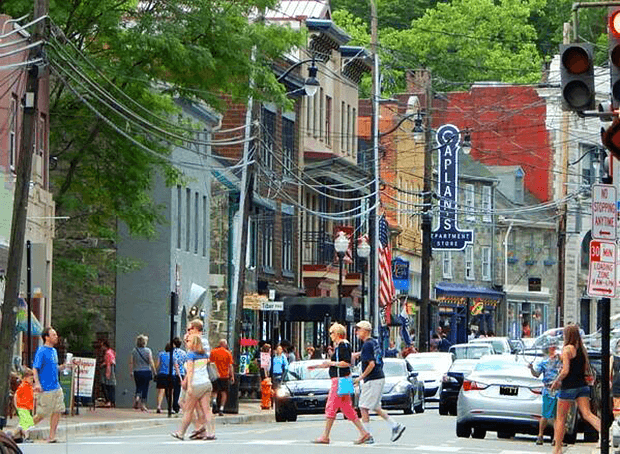- December 08, 2015
- By Natalie Koltun
Instead of high-priced consultants or out-of-state advisers, Howard County is finding solutions for its toughest economic, environmental and social sustainability issues on the University of Maryland campus.
More than 500 graduate and undergraduate students working with faculty members in 34 courses this academic year are focused on the county’s challenges through the Partnership for Action Learning in Sustainability (PALS) program.
The county’s government and the nonprofit Columbia Association, which provides recreational and community services for the planned community’s nearly 100,000 residents, have asked UMD to provide recommendations on topics such as revitalizing historic Ellicott City, addressing its growing aging population and developing ecofriendly urban designs along Columbia’s Lake Kittamaqundi.
“There’s no shortage of needs,” says Uri Avin, director of both PALS and the Planning and Design Center in UMD’s National Center for Smart Growth (NCSG). “The faculty and students are the real engines of outreach and service to local communities that gain viable value from partnering with us.”
The customized UMD courses, which cover 16 fields including economics, landscape architecture and public health, give students opportunities to put concepts learned in the classroom into practice, he says.
“It’s exciting to create a real-world, concrete product of fresh ideas that you provide to an entity through the program,” says Derek Lombardi, a graduate student in community planning. “In other classes, you just read case studies or hear a lecture, so you’re making sense of the concepts that are being taught. But especially as a graduate student, I need to know how my knowledge and skills I accrued from classes will end up being put to use as a future practitioner.”

In addition to subsidies from the university, $75,000 of course funding comes from Howard County and $25,000 from the Columbia Association. Avin estimates the value of the PALS research, if charged by a private consultancy, at about $1 million.
“Working with university students adds a layer of expertise that a company just can’t give you,” said Carl DeLorenzo, director of policy and programs for Howard County. “These students and faculty really care about the state of Maryland, so you know you’re going to get a good product because it’s an outlet for them to add personal connection to their work.”
PALS was created by Gerrit Knaap, director of UMD’s NCSG, in response to local governments’ dwindling budgets and shrinking staff. The program, he says, represents an integral part of UMD’s land-grant mission to create a more sustainable state.
Launched in September 2014 with the city of Frederick, PALS’ pilot program explored industrial redevelopment, researched better pedestrian and bicycle transportation and studied how climate change affects the city’s watershed. A smaller, ongoing collaboration with College Park began in January 2015, which gives students an opportunity to research approaches to advance urban development along Baltimore Avenue and strengthen the relationship between the university and city.
“The beauty of this program is it synergizes many departments and programs that have some overlap in topics to achieve a common goal of learning while making real impact on our community,” Avin says.
Tags
Student Experience